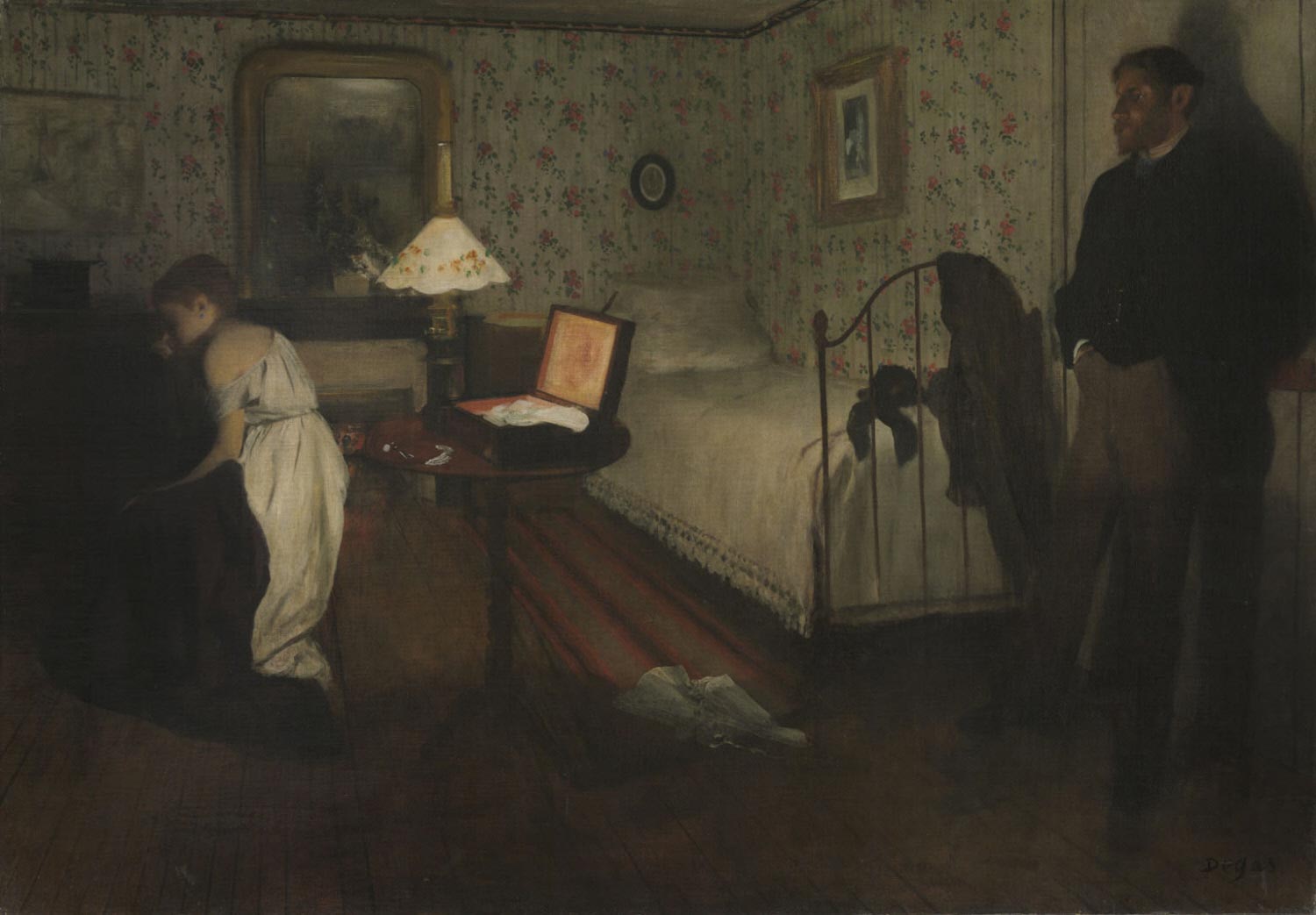art-Degas.com
Edgar Degas 1834-1917
Edgar Degas - Interior. The Rape 1869
 Interior. The Rape |
Interior has been described as "the most theatrical of all Degas's compositions of modern life". Art historians have written of the work's "distinctly stage-managed character: items are arranged as if they are props, while the dramatic lighting increases the impression that a play is being enacted ... In addition to the mysterious subject-matter, this stage-like effect is presumably one of the chief reasons why scholars have repeatedly tried to identify a literary source for the painting." Various Naturalist novels have been put forward for consideration. Georges Rivière, a friend of the Impressionists, first suggested Louis Edmond Duranty's novel, the Struggle of Francoise Duquesnoy, as a source; the idea was accepted by R.H. Wilenski and others but found unsatisfactory by Duranty experts. Later, a scene within Émile Zola's Madeleine Férat was identified as matching the elements of Degas's painting in several particulars—but while the narrow bed and the round table corresponded, the position of the figures relative to each other did not.
In 1976, art historian Theodore Reff published his conjecture that Interior depicts a scene from Zola's novel Thérèse Raquin. This idea has been widely, but not universally, accepted by other scholars. Thérèse Raquin, published in 1867, tells the story of a young orphan whose aunt has forced her to marry her sickly son, Camille Raquin. Thérèse enters into an affair with one of Camille's friends, Laurent, and the two carry out a plot to murder Camille, staging the death to look like an accident. Later, on their wedding night, Thérèse and Laurent find their relationship poisoned by guilt.